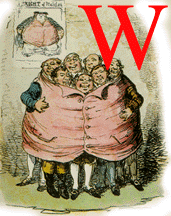[Spencer's “Progress: Its Law and Cause” originally appeared in the British Quarterly. This text has comes from the Project Gutenberg online version of the Everyman edition of Essays of Education — George P. Landow]

hile written language was passing through its earlier stages of development, the mural decoration which formed its root was being differentiated into Painting and Sculpture. The gods, kings, men, and animals represented, were originally marked by indented outlines and coloured. In most cases these outlines were of such depth, and the object they circumscribed so far rounded and marked out in its leading parts, as to form a species of work intermediate between intaglio and bas-relief. In other cases we see an advance upon this: the raised spaces between the figures being chiselled off, and the figures themselves appropriately tinted, a painted bas-relief was produced. The restored Assyrian architecture at Sydenham exhibits this style of art carried to greater perfection—the persons and things represented, though still barbarously coloured, are carved out with more truth and in greater detail: and in the winged lions and bulls used for the angles of gateways, we may see a considerable advance towards a completely sculptured figure; which, nevertheless, is still coloured, and still forms part of the building. But while in Assyria the production of a statue proper seems to have been little, if at all, attempted, we may trace in Egyptian art the gradual separation of the sculptured figure from the wall. A walk through the collection in the will clearly show this; while it will British Museum at the same time afford an opportunity of observing the evident traces which the independent statues bear of their derivation from bas-relief: seeing that nearly all of them not only display that union of the limbs with the body which is the characteristic of bas-relief, but have the back of the statue united from head to foot with a block which stands in place of the original wall.
Greece repeated the leading stages of this progress. As in Egypt and Assyria, these twin arts were at first united with each other and with their parent, Architecture, and were the aids of Religion and Government. On the friezes of Greek temples, we see coloured bas-reliefs representing sacrifices, battles, processions, games—all in some sort religious. On the pediments we see painted sculptures more or less united with the tympanum, and having for subjects the triumphs of gods or heroes. Even when we come to statues that are definitely separated from the buildings to which they pertain, we still find them coloured; and only in the later periods of Greek civilisation does the differentiation of sculpture from painting appear to have become complete.
In Christian art we may clearly trace a parallel re-genesis. All early paintings and sculptures throughout Europe were religious in subject—represented Christs, crucifixions, virgins, holy families, apostles, saints. They formed integral parts of church architecture, and were among the means of exciting worship; as in Roman Catholic countries they still are. Moreover, the early sculptures of Christ on the cross, of virgins, of saints, were coloured: and it needs but to call to mind the painted madonnas and crucifixes still abundant in continental churches and highways, to perceive the significant fact that painting and sculpture continue in closest connection with each other where they continue in closest connection with their parent. Even when Christian sculpture was pretty clearly differentiated from painting, it was still religious and governmental in its subjects—was used for tombs in churches and statues of kings: while, at the same time, painting, where not purely ecclesiastical, was applied to the decoration of palaces, and besides representing royal personages, was almost wholly devoted to sacred legends. Only in quite recent times have painting and sculpture become entirely secular arts. Only within these few centuries has painting been divided into historical, landscape, marine, architectural, genre, animal, still-life, etc., and sculpture grown heterogeneous in respect of the variety of real and ideal subjects with which it occupies itself.
Strange as it seems then, we find it no less true, that all forms of written language, of painting, and of sculpture, have a common root in the politico-religious decorations of ancient temples and palaces. Little resemblance as they now have, the bust that stands on the console, the landscape that hangs against the wall, and the copy of the Times lying upon the table, are remotely akin; not only in nature, but by extraction. The brazen face of the knocker which the postman has just lifted, is related not only to the woodcuts of the Illustrated London News which he is delivering, but to the characters of the billet-doux which accompanies it. Between the painted window, the prayer-book on which its light falls, and the adjacent monument, there is consanguinity. The effigies on our coins, the signs over shops, the figures that fill every ledger, the coats of arms outside the carriage panel, and the placards inside the omnibus, are, in common with dolls, blue-books, paper-hangings, lineally descended from the rude sculpture-paintings in which the Egyptians represented the triumphs and worship of their god-kings. Perhaps no example can be given which more vividly illustrates the multiplicity and heterogeneity of the products that in course of time may arise by successive differentiations from a common stock.
Before passing to other classes of facts, it should be observed that the evolution of the homogeneous into the heterogeneous is displayed not only in the separation of Painting and Sculpture from Architecture and from each other, and in the greater variety of subjects they embody, but it is further shown in the structure of each work. A modern picture or statue is of far more heterogeneous nature than an ancient one. [emphasis added]
Related material
Last modified 19 November 2019